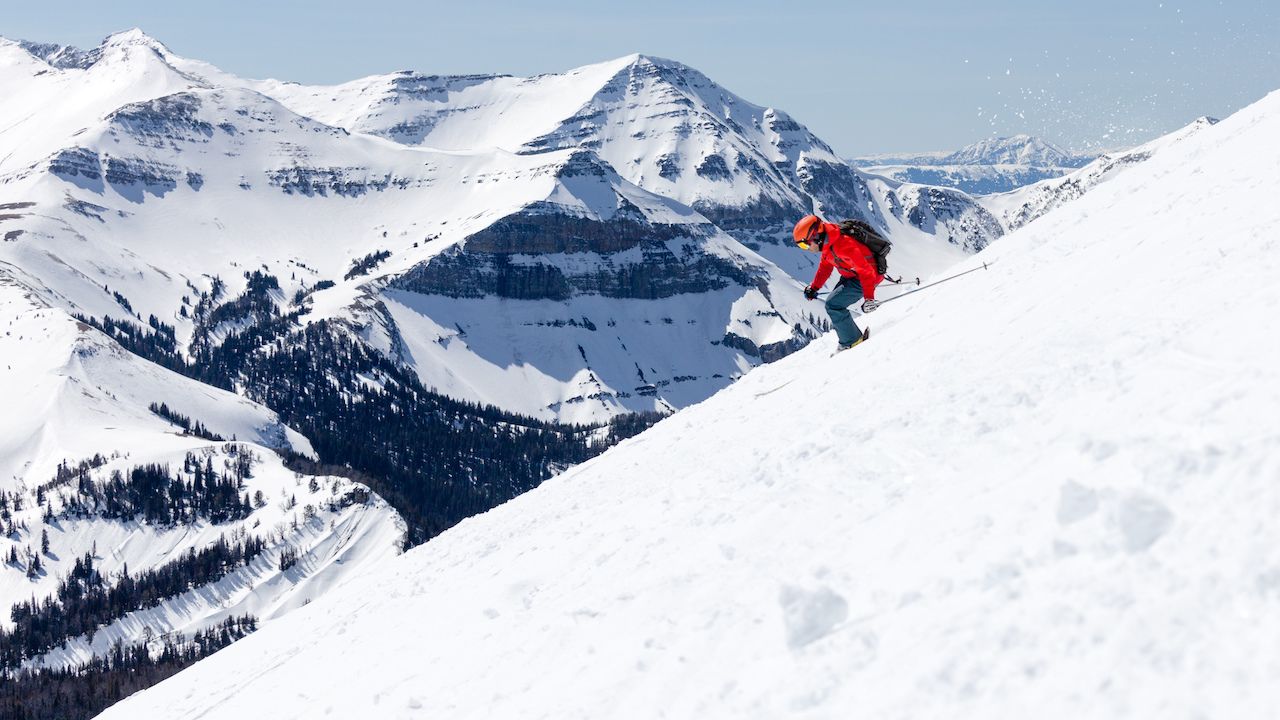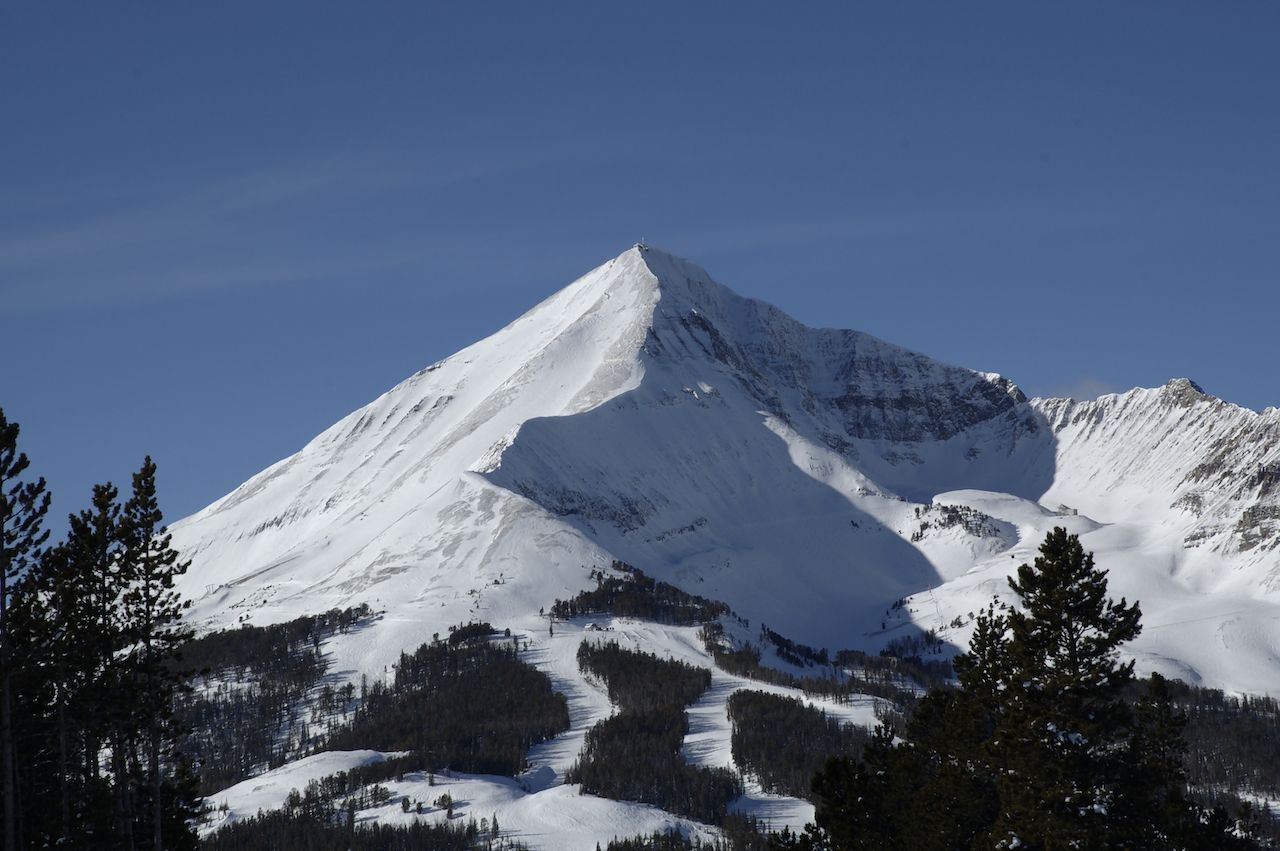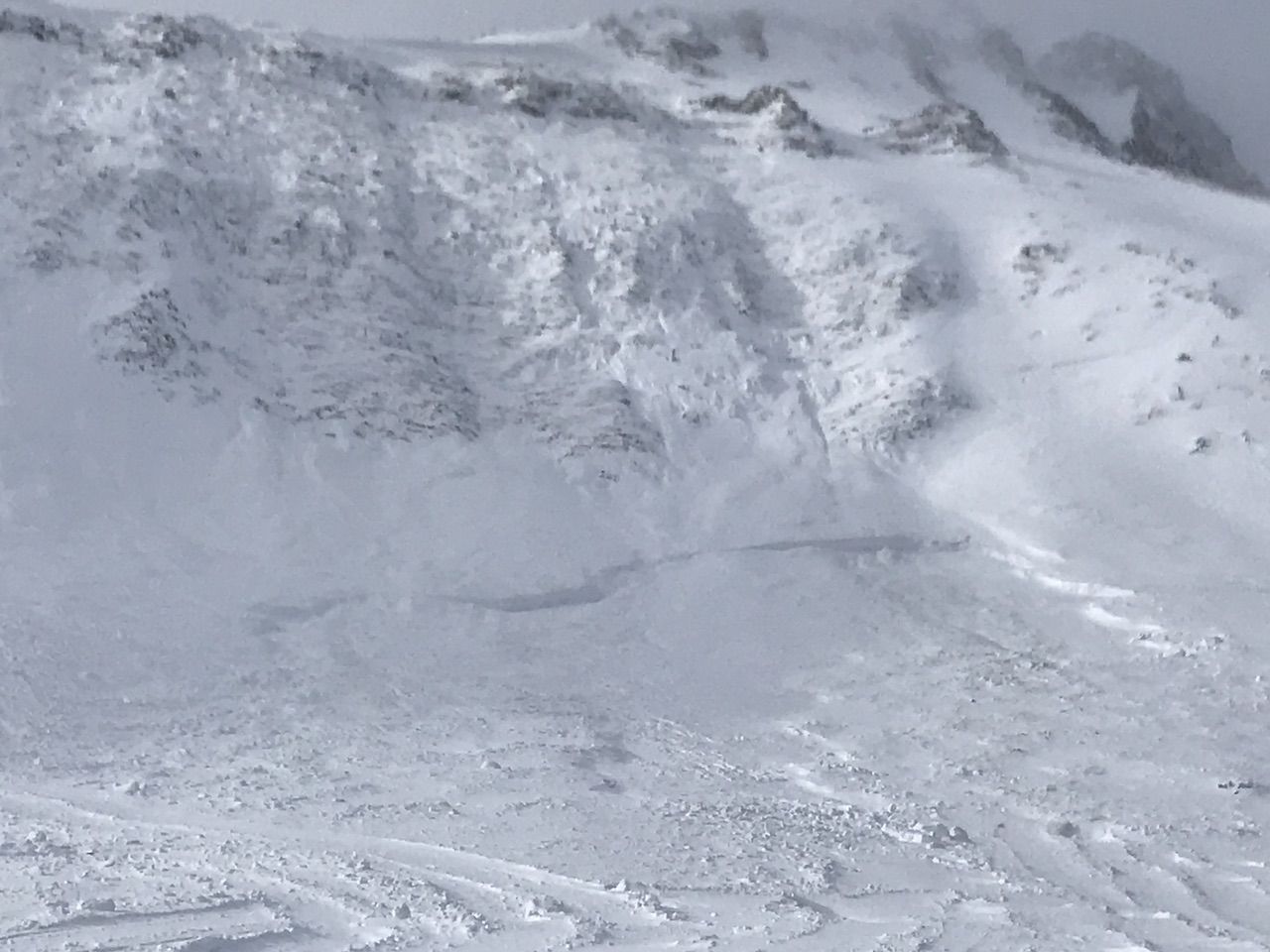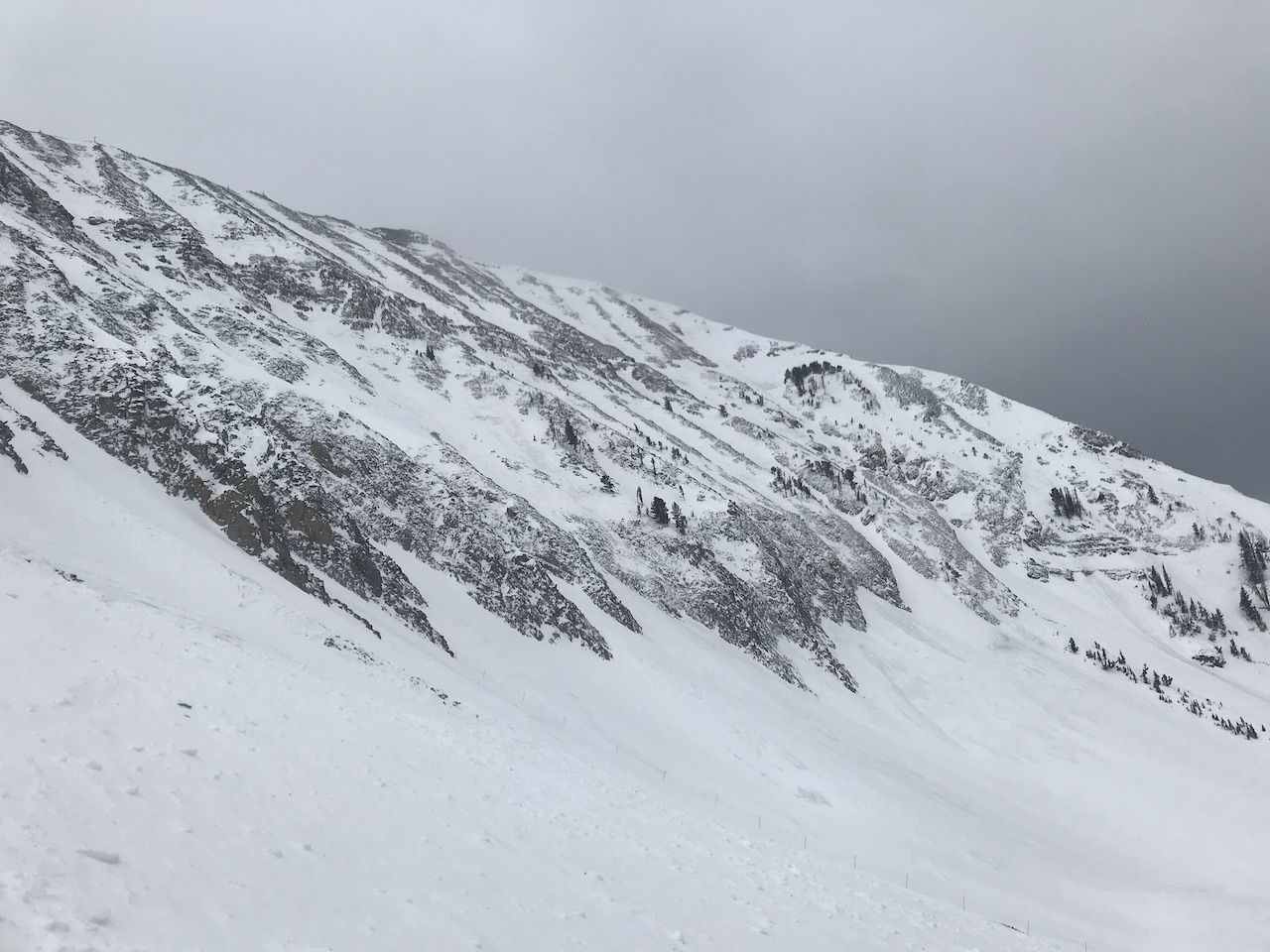LATEST TRAVEL

Wild, untamed, and home to some of the gnarliest lines you can ski from a chairlift. Such is the lore of Montana’s Big Sky Resort, which had piqued my interest — as a big-mountain snowboarder and adventurer — for more than a decade.
I came to Montana to find what seems to be rapidly disappearing from many ski areas under corporate conglomeration. I wanted to ride some extreme terrain, yes, but I also wanted to spend time with the people who built their lives around that terrain, the people increasingly forced out of mountain towns to make room for the next multi-million-dollar development project.
Big Sky was supposed to be the place to find both. A place where — despite being accessible to Ikon Pass holders and adjacent to the one-percenter’s private Yellowstone Club, where the likes of Justin Timberlake and Tom Brady spend their ski holidays — the locals were still just as hardcore as they’ve always been.
I came, in essence, to find out what this place was all about.
Triple black diamonds that will scare you

Photo: fellswaymedia/Shutterstock
Big Sky has no shortage of the goods. This includes a series of newly minted “triple black diamond” runs, a rare classification meant to instill caution in the traveling, Ikon Pass-holding ski public. Since the pass’s inception in 2018, that public has swarmed to places like Big Sky with their skis waxed and their egos ready to wax poetic about heroic alpine pursuits.
The locals, I soon learned, were becoming increasingly wary of underprepared globetrotters who seemed to know little more about the mountain than the names of the runs they hoped to brag about. “Big Sky offers the type of terrain that diehard skiers travel tens of miles into the backcountry for,” said Patrick Conroy, a video producer with the resort’s media department. “It’s easy to scare yourself here.”
The most extreme areas, including Big Couloir and North Summit Snowfield off the top of Lone Mountain, are classified as “Special Access Terrain.” They may not be open on any given day, with unpredictable wind and rapidly changing avalanche conditions often closing both for days at a time.
Should you be fortunate to catch Big Couloir, you’ll have to sign a waiver clearing the resort of any responsibility for your own adventurism before beginning the traverse to the drop in. You must ski with a partner, and avalanche gear including a beacon, shovel, and probe are highly recommended to the point that you’ll probably — and justifiably — be jeered at if you don’t have them.
“You have to be careful here,” says Conroy. As someone who’s on the mountain every day, he had joined me for dinner at Westward Social on my first night in town to offer his tips on terrain and, I gathered, to make sure I wasn’t coming in too hot-headed. “If you don’t know what you’re getting into, you get cliffed out and have to get rescued. Even with all the growth and expansion, at the end of the day, the mountain still keeps us humble.”
Terrain that is shaped by the wind

Photo: Colton Stiffler/Shutterstock
“No matter which way the wind blows, it’s leaving something good,” says Conroy. “But the steeps are even more challenging when they’re not full of powder. I find myself more gripped then because it’s like a puzzle. It never skis the same way twice. What move do I make next?”
Lone Mountain, whose monolithic peak towers over the resort and is viewable throughout the surrounding valley, is a full-on microclimate in itself, with westward wind routinely barreling over its windward ridge and settling on the skiable faces. Because of the wind factor, avalanche danger is omnipresent at Big Sky.
“Every day, Big Sky Ski Patrol methodically assesses the snow stability on Lone Mountain,” says Mike Buotte, Snow Safety Director with Big Sky Ski Patrol. “The absolute priority is safety. Opening high-alpine terrain requires extra careful work, both on the mountain and with data analysis. Our safety, and yours, requires diligence and, oftentimes, patience.”
“The most rewarding days are when we have fresh snow, and Lone Mountain is safely open, wall to wall, in a timely manner with skiers enjoying safe access to the exceptional terrain Big Sky has to offer,” Buotte adds.
Riding the last frontier

Photo: Biografix/Shutterstock
I awoke the morning of my first day on the hill to a storm rolling in. Clouds covered Lone Mountain, impeding the view of Big Couloir — my primary target for the trip — from my eighth-floor room at the Summit at Big Sky hotel.
“It’s actually insane that this terrain is avy-controlled, almost too good to be true,” I said to Kass McCarthy, my pro guide from Big Sky’s ski school, before we dropped into Liberty Bowl from the 11,166-foot summit of Lone Mountain. Moments earlier, on the ride up the Lone Peak Tram, I had asked her about the triple black diamond runs. “What they really mean is that I’m going to have to add another diamond to my ass tattoo,” she had said. “The resort added a third diamond in order to separate them from the more ‘normal’ extreme terrain here.”
During my first morning on the mountain, three patrol-triggered avalanches rumbled down from the hazardous steeps of Lone Peak in the matter of a few minutes. One, set off in The Headwaters, had completely blanketed the triple black diamond run Obsidian, potentially knocking it out of commission for the remainder of the season.
The resort’s “Special Access Terrain” was closed due to the risk. Still, I’d be lying if I said I wasn’t nervous at that moment.
Giving the mountain the respect it deserves

Photo: Tim Wenger
The problem is that not everyone adopts the lack of ego Conroy suggests. Big Sky, along with extreme skiing hotspots like Jackson Hole, Wyoming, and Squaw Valley, California, have borne the brunt of bucket-listers with the Ikon Pass. This has brought loads of new skiers and snowboarders to their hills. Some locals point out that many of these visitors don’t adequately research their destinations and, by attempting to access extreme terrain and iconic runs that they aren’t familiar with, are making the mountain less safe for everyone.
They’re also clogging up lift carousels and apres-ski bars. According to the National Ski Areas Association, after years of slow or no growth, skier numbers across US resorts increased to 59 million — or 11 percent — during the 2018-19 season. That was also the first season of the Ikon Pass’s existence. Several resorts, including Big Sky, are also attracting skiers with programs like First Tracks, where customers can pay to ascend the mountain an hour before the general public to access fresh powder.
A misconception among skiers visiting Big Sky, and resorts with comparable terrain, is that they’ve earned the right to be there — even on roped off runs. Their presence, though, can impede the safety progression of the mountain patrol. Sometimes, it’s just not meant to be. When the peak is closed or late to open, it’s because ski patrol is responding to legitimate issues — like an avalanche threat that puts skiers on the mountain at risk — and is working to open the terrain when conditions allow.
Two hours after strapping in for our first run, McCarthy and I still hadn’t received clearance to head to the Lone Mountain summit.
A proper day at Big Sky

Photo: Tim Wenger
The good news is that, even when the Special Access Terrain is closed, there’s still plenty to ski at Big Sky. With a vertical drop of 4,350 feet across over 5,800 acres of terrain, it’s nearly impossible to hit the entire mountain in one trip.
When the summit runs are closed after a storm, you can head to the runs off Headwaters Zone 0 — accessible via a grueling, singletrack-width traverse through the gate at the top of the Headwaters Lift. We descended on Cold Spring, a precipitous and narrow couloir that, like most of Big Sky’s tougher runs, is a definitive “no fall” zone.
After navigating the couloir and passing through Stillwater Bowl below, we lapped the short-and-sweet Lone Tree lift. There, the rugged, tree-lined bumps of Shaftway and Single Jack are a good start, and the formidable Moonshine takes tight jump turns to manage. We then moved on to Andesite Mountain, via the Ram Charger lift, and dropped into Shady’s Chute, Colter’s Hell, and MineShaft. The best run in this area, though, is Peru, a double-black descent through widely spaced trees steep enough that it feels like any slip-up will drop you onto the row of vacation homes below.

Photo: Tim Wenger
Still, the summit eluded us. We checked in with the lifties after each run. We finally got the call around 11:30 AM and made our way over.
A 270-degree view from Beacon Point to Sphinx Mountain greets skiers as they exit at the top of the tram. Time appeared to stop. Everything, in fact, appeared to stop except for the wind and the pounding of my heart in my chest. I strapped into my board and proceeded onward to Liberty Bowl. We’d entered another no-fall zone.
We made our way down to the Dakota Lift via Bavarian Forest, ending the day with a beer at Shedhorn Grill. This yurt at the bottom of the Lenin run is one of the few independently operated food and beverage establishments at the resort — and the best place to toast to the exhilarating experience that is skiing or riding down from the summit of Lone Mountain.
Ambitious plans for the future

Photo: Zorro Stock Images/Shutterstock
“I wear my beacon every day I ski out here; it’s just that kind of place,” Stacie Mesuda, Big Sky’s PR Manager, had told me back on my first night in town, a piece of advice I followed throughout both of my days on the hill. “I’m blown away constantly at how remote it actually is.”
Its remoteness doesn’t mean that the resort is lacking in amenities, however. Big Sky is home to North America’s sole eight-person lift, the Ram Charger, which warms its passengers with heated seats and a retractable wind bubble, use of which locals referred to as “going underwater.” With the unpredictability of Montana’s high-altitude weather, the comforts can be nice, even for the hardiest of mountaineers.
The resort’s long-term action plan, known as Big Sky 2025, is underway. Ram Charger is part of what the resort hopes to turn into the most technologically advanced lift network in North America, combining the comforts of toasty, high-speed ascents into a Euro-style layout, where skiers can quickly move about different base areas including the primary access point, Mountain Village, the smaller Madison Base, and two members-only villages, Spanish Peaks and Moonlight Lodge.
“Where Colorado and Utah hit their stride 20 years ago, we’re feeling that now,” Mesuda said.
It’s on us to protect these places

Photo: Tim Wenger
On my last night in town, McCarthy invited me for beers — which topped out at Montana law’s three-pint-per-person maximum — with her crew of instructors, ski patrollers, and other locals at Beehive Basin Brewery. McCarthy had shown me terrain ranging from steep couloirs to tree carvers to powder fields that most casual weekenders never get the chance to know, and I enjoyed comparing my limited experience with theirs. Beyond that, I hadn’t felt so welcomed by a group of strangers since college.
I didn’t get my Big Couloir run in, but I did find the best of what the mountain, and the ski-town culture that I’ve spent my life pursuing, had to offer. What stood out most to me was how passionate everyone was about protecting their town’s culture and lifestyle, a sentiment similar to what I’ve experienced — and felt myself — in ski towns back home in Colorado.
For a visiting journalist, though, this spirit also meant that I had never felt such a watchful eye on me. To some locals, I’m part of the problem, part of the reason why they had to wait two hours to board the tram after the last storm. I sensed pressure from a community of diehards who’ve dedicated themselves to this place and who are understandably wary of those who come in and leave just as quickly, ready to write a story that isn’t their own.
Big Sky is among the last great ski towns left in America. It’s on us, as visitors to these special places, to treat them with the respect they deserve. It’s not that we shouldn’t come. We should come — adequately prepared and also ready to back off when necessary. That’s how we can do right by both the mountain and the people who make it accessible to us, and help keep these places as unique as they are.
With the massive changes afoot, the question going forward is whether Big Sky can retain its “final frontier” vibe.
One need only look to Montana’s rebel spirit to find the answer. ![]()
The post Big Sky is the final frontier for big-mountain resort skiing appeared first on Matador Network.
from Matador Network https://ift.tt/2uquW5g


No comments